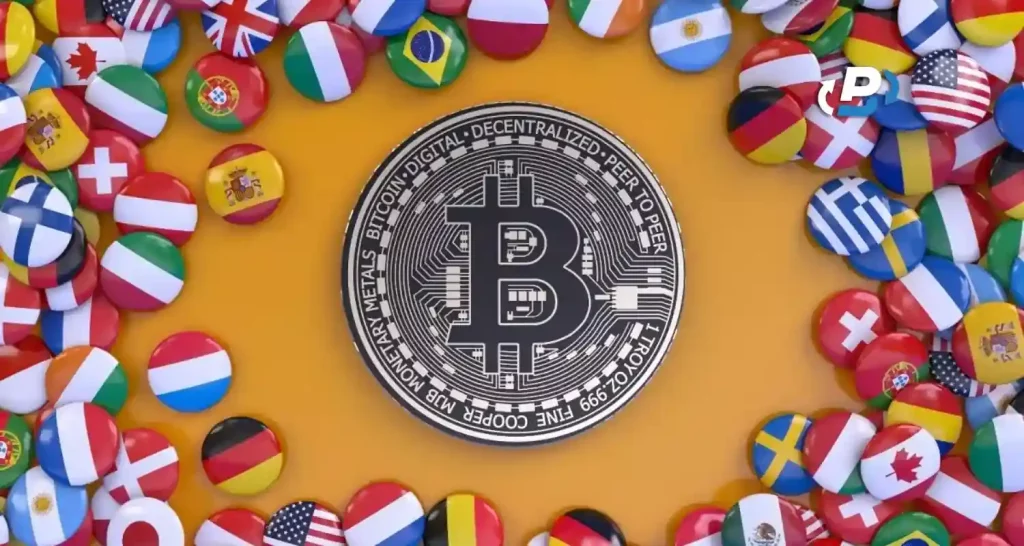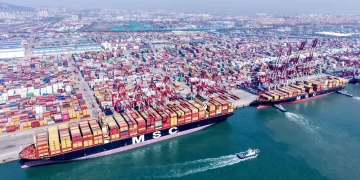Introduction
In late 2024, satellite monitoring firms detected unexpected surges in nighttime thermal activity across specific provinces in Vietnam, Thailand, and Malaysia. These “crypto heat zones” correlated with a marked increase in blockchain mining activity, as measured by on-chain data. Despite these red flags—rising regional electricity use, visible heat plumes, and mounting strain on local grids—ESG (Environmental, Social, and Governance) rating agencies have largely maintained positive assessments of these economies. The disconnect is raising eyebrows among investors, who are beginning to question whether ESG frameworks are keeping up with decentralized, energy-intensive digital industries. The core contradiction is stark: while hard data reveals escalating environmental and financial stress in Southeast Asia’s power grids, institutional ESG models remain mostly static. Could this oversight be sowing the seeds for sovereign credit repricing, ESG credibility erosion, and regional investment misallocations?
Key Data and Background
Throughout Q3 and Q4 of 2024, satellite thermal images revealed abnormal nighttime heat patterns concentrated in several districts across northern Vietnam, eastern Malaysia, and southern Thailand. The most notable spikes, recorded by GeoNight and corroborated by NOAA data, showed regional temperature anomalies of 5–7 degrees Celsius above seasonal norms, specifically during non-peak industrial hours. These thermal anomalies weren’t linked to seasonal fires or industrial expansion—they correlated precisely with on-chain data showing hash rate surges in regional mining pools for Bitcoin Classic, Corsacoin, and AltLayer.
HashFlow Insights, a blockchain analytics firm, confirmed that mining pool traffic from Vietnamese IP addresses increased by 250% year-over-year in 2024. Meanwhile, Thailand’s mining wallet activity on the Solana subnet rose by 190% in the second half of the year. Local news outlets reported a spike in abandoned factories being repurposed as private mining rigs, often using direct-to-grid or private diesel-based energy sources.
Power grid operators in Vietnam and Thailand issued warnings about the unexpected energy draw. In two northern provinces of Vietnam, grid demand during 10 p.m. to 3 a.m. reached 98% of capacity—levels typically only seen during peak industrial daytime usage. Electricity pricing in these areas rose by 12–15%, compared to a national average of 5%. Industrial zones reported brief rolling brownouts. However, ESG ratings from leading agencies like MSCI and Sustainalytics did not reflect these changes. MSCI’s 2024 Q4 report stated, “No material evidence was found to indicate grid stress or environmental degradation in the region due to crypto-related activity.”
At the same time, Vietnamese 5-year USD-denominated bonds widened by 50 basis points in spreads. Thailand and Malaysia also saw moderate bond market repricing, as investors began baking in new sovereign risk premiums related to unmanaged energy consumption. Credit markets reacted to the signals faster than ESG scorekeepers, revealing a troubling lag in institutional frameworks.
Cross-Market Impacts
The rise in off-grid crypto-mining has triggered ripple effects far beyond electricity markets. First, the sovereign bond market repricing signals that investors are no longer waiting for ESG validation to adjust exposure. Vietnam’s 5-year bond yield rose from 4.1% in July 2024 to 4.6% by September. Thailand’s increased from 3.5% to 3.9%, while Malaysia’s moved from 3.3% to 3.6%. In all three countries, this was the steepest quarterly bond repricing since the pandemic era.
Second, domestic manufacturing sectors are now absorbing unplanned power cost increases. In Vietnam, textile exporters in Bac Ninh province reported operating cost hikes of 8–12%, forcing renegotiations on international contracts. Thailand’s eastern electronics corridor saw similar issues, with chip packaging firms warning of thinner margins due to overnight power cost jumps. Several Taiwanese-owned factories in Malaysia delayed expansion plans due to what they called “energy cost unpredictability.”
These cost shifts are feeding into the global supply chain. Southeast Asia is a key manufacturing alternative to China. If energy instability or hidden carbon costs persist, multinational procurement managers may reroute orders toward more transparent or regulated economies. This is a risk not captured in MSCI’s current regional ESG framework.
A useful historical comparison is China’s hydropower stress during its 2011–2013 digital economy surge. Bitcoin miners in Sichuan province overloaded hydroelectric systems, causing brownouts that only became visible to investors after multiple manufacturing complaints and export disruptions. ESG models took nearly 24 months to integrate that impact.
Today’s Southeast Asian mining boom presents a stealthier challenge. Unlike hydropower or large data centers, crypto rigs often operate without formal registration or environmental oversight. They are agile, decentralized, and capable of shifting locations quickly. This makes traditional ESG audit trails ineffective. The energy consumption goes unrecorded in national carbon accounting but creates very real local consequences—from blackout risk to inflationary pressures.
More subtly, these energy surges undermine lending stability. Local banks issuing mortgages and SME loans depend on predictable power supplies. If electricity becomes erratic or expensive due to mining spikes, small businesses default. Already, non-performing loan ratios in Vietnamese agricultural lending crept up from 3.1% to 4.2% in late 2024, partially blamed on failed refrigeration cycles and machine shutdowns during unscheduled blackouts.
All these dynamics point to a new financial puzzle: how should investors price the energy risk of a digital economy when ESG signals fail to detect it?

Expert Viewpoints
ESG rating agencies remain conservative in their interpretations. MSCI’s December 2024 bulletin reaffirmed its positive environmental outlook for Vietnam and Thailand, stating, “While localized thermal anomalies are acknowledged, they are not persistent enough to justify a rating shift without validated pollutant data.” Sustainalytics adopted a similar stance, maintaining “watch” status but not altering sovereign ESG scores.
Their position hinges on methodology: both agencies rely heavily on government-reported carbon emissions, central energy audits, and industrial disclosures. They rarely incorporate real-time satellite imaging or blockchain-derived energy usage, citing verification difficulties.
In contrast, decentralized ESG watchdogs like GreenHash and The Ledger Environment Collective argue that real-time, permissionless data streams offer more reliable early-warning systems. GreenHash’s 2024 year-end report showed a 1:1 correlation between hash rate spikes and night-thermal surges in five Southeast Asian regions. They argue that heat anomalies paired with mining volume are early indicators of grid stress and hidden emissions.
Notably, Nobel laureate William Nordhaus recently published a paper arguing that digital-era pollution metrics must evolve. “We are entering a phase where carbon intensity becomes digitally fragmented—off-book, off-the-grid, yet systemically important,” he wrote. Nordhaus advocates for ESG models to embrace dynamic metrics like blockchain traffic, satellite imaging, and distributed energy monitoring.
Meanwhile, investment firms are split. JPMorgan’s Asia Credit Desk noted in a recent note: “Rising bond yields in Vietnam are reflective of local infrastructure limits—not macro inflation per se.” Goldman Sachs remains more skeptical, citing “insufficient clarity” to adjust positions based on heat-map reports. But hedge fund managers are increasingly using unorthodox tools, from power grid telemetry to gas generator import data, to predict bond spread moves and industrial slowdowns.
Future Scenarios and Strategy
If governments implement crypto-mining regulations in early 2025—such as requiring power metering, grid permits, or carbon offset purchases—then ESG scores may improve, and bond spreads could normalize. Vietnam and Malaysia have floated trial permits in early 2025. This would likely draw institutional capital back into their sovereign bonds and manufacturing stocks.
If unchecked, however, crypto mining will remain a shadow economic force, draining power and destabilizing grids. Bond yields may continue climbing, while ESG credibility suffers. Small manufacturers could face rolling blackouts, inflation, and capital flight. Export competitiveness would erode.
The more likely middle ground is patchwork enforcement. Some provinces crack down, others look the other way. ESG firms slowly integrate satellite and on-chain data but lag behind hedge fund models and satellite traders. Grid stress may persist in crypto hotspots, while investors demand greater clarity.
For investors, the strategy involves five priorities:
- Track hash rates in Southeast Asian mining pools and cross-reference with thermal maps
- Monitor power price spikes at the provincial level—not national averages
- Watch for bond spread widening as proxy for sovereign energy stress
- Adjust ESG filters to account for real-time environmental indicators
- Focus on ETFs or funds with exposure to regulated grids and clean-tech infrastructure in the region
Conclusion
The crypto-mining boom across Southeast Asia is sending clear signals: spiking hash rates, satellite-detected thermal hotspots, and bond market stress. Yet ESG frameworks continue to treat the region as low-risk. This disconnect poses both a credibility challenge and a portfolio risk for global investors. In the digital energy age, can old ESG models adapt to the pace and opacity of decentralized disruption?
































